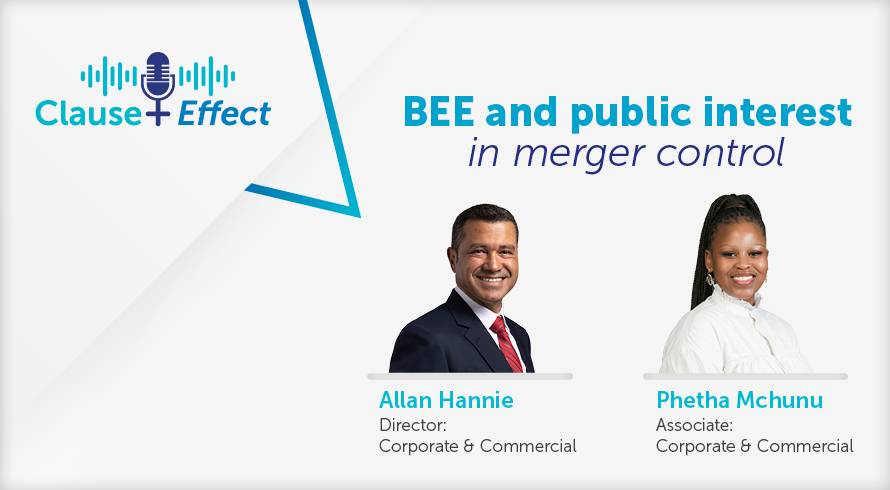The route from A to DD: A roadmap for a successful due diligence
At a glance
- The value of a thorough due diligence process in any merger/acquisition transaction cannot be overstated.
- Some key elements to consider when conducting a due diligence are: the scope of the due diligence; organising the virtual data room; managing timelines; choosing the relevant type of report to be produced from the process; and determining whether warranty and indemnity insurance is needed.
- Having a clear idea of the direction the due diligence should take before any work is conducted will assist in reducing costs, limiting the time that the due diligence process will take, and will provide an end-product fit for an investor's purpose.
In this article we explore a number of factors that are often not fully considered by investors when undertaking a due diligence in connection with a potential investment.
Determining the DD scope
The first point of call is to determine the scope of the DD, or in other words, the subject matter of the investigation. Commissioning a full-scope due diligence may not be necessary in order to obtain sufficient comfort to make an investment and it may benefit an investor to conduct a high-level internal due diligence of a potential target in order to understand the business before engaging professional advisors to conduct a DD.
An investor can choose to conduct a full-scope DD into all aspects of a target’s business, including, legal, financial, business, tax, and environmental, social and governance. In relation to the legal due diligence, a full-scope investigation may include an analysis of group status, commercial contracts, finance and banking, employment, real estate, litigation, IT, intellectual property, insurance, environmental, health and safety, and regulatory, to name a few of the common workstreams. This approach works best when the investor has limited knowledge of how the target’s business is run and requires a comprehensive understanding from its advisors.
However, if an investor already has some knowledge of the target’s business through its own investigations and consultations with the target’s management, then the investor may be comfortable with limiting a DD’s scope to areas of greater risk based on the nature of the target’s business. For example, looking at the environmental aspects of a financial services business is not likely to be of great use to a potential investor, but looking at the financial regulatory environment in which the business operates will be critical to the value that the DD can bring to the investment process.
A legal advisor can assist in determining the scope of the legal DD and highlighting the areas of high risk that should be focused on.
Organising the virtual data room
Once the scope has been determined, the target will need to start collecting and collating the relevant requested information into a central data repository, usually a virtual data room (VDR).
It is important to ensure that the VDR is set up in the most user-friendly manner possible and for the VDR to be fully populated before the DD starts in earnest. A disorganised VDR can prolong the due diligence process and cause unnecessary costs due to advisors being required to locate relevant documents and, potentially, revisit them when information comes to light during the course of the DD.
It is helpful for the target to be provided with a folder directory by the legal advisors conducting the DD before the VDR is populated, to ensure that the VDR is well-organised before it commences. The arrangement of the VDR will differ from business to business, based on the way in which the business is structured. A well-organised VDR also assists further down the line in the due diligence process, as documentation provided in responses to additional queries can be placed in the correct folder in an intuitive manner, which can then easily be communicated to the due diligence team.
Managing timelines and target management
It is critical to ensure that clear timelines are set up at the beginning of the due diligence process, and that these timelines, as well as the entire due diligence process, are communicated to the target before the DD commences.
The relationship between the investor and the target needs to be carefully managed at all times. This is because the role of responding to information requests will often fall to a handful of the target’s management team. These people need to attend to the needs of the DD advisors in addition to their day jobs. On larger DDs where additional information requests can be voluminous, it can be taxing on the target’s management team to manage the flow of information.
Establishing a timeline with the relevant advisors and the target at the start of the process and adhering to this timeline as far as possible can ensure that the process runs smoothly and with greater co-operation from all involved. As the investor will likely need to establish a healthy working relationship with the management team of the target group, creating boundaries for a well-managed due diligence process can ensure that the relationship gets off on the right foot.
Choosing the type of due diligence report
The due diligence report is the product presented to the investor and will set out the advisors’ findings, recommendations, and identified risks. However, before the report can be prepared, it is vital for an investor to understand and communicate the type of report that is required.
There is a fundamental (and often misunderstood) difference between the scope of a DD and the type of DD that is conducted. The scope of the DD speaks to the type of subject matter that is reviewed and reported on, whereas the type of DD speaks to the manner in which an advisor presents its findings to the investor.
A due diligence report can take the form of a comprehensive summary of all the different elements of the business and commercial contracts concluded by a target group. Alternatively, a report can set out only the key risks which a potential investor would want to be aware of and other matters material to the acquisition/investment. The latter form of report is commonly referred to as a “red flag” or “exceptions-based” report. Most often, there is more value to an investor in opting for a red flag report, as only material matters and risks are highlighted and advisors are not required to spend time summarising contracts, except to the extent that it is necessary in order to contextualise any risks that are identified.
However, there are instances where a more comprehensive report may be advisable or have appreciable commercial benefit, as discussed below.
Considering the role of warranty and indemnity insurance
Before commencing any due diligence process, an investor should determine whether it wishes to take out warranty and indemnity (W&I) insurance for the transaction. Where a transaction is secured with W&I insurance, each warranty and indemnity that is sought in the transaction agreement needs to have been adequately assessed in the DD. In order to determine this, underwriters use the due diligence reports prepared by advisors to assess whether the investor has conducted sufficient due diligence into all warranties sought to be provided in relation to the transaction.
In these circumstances, a high-level exceptions-based report may not provide insurers with adequate comfort that a fulsome due diligence exercise has been conducted. A more detailed report that exhibits the breadth of the due diligence exercise may be more appropriate.
Vitally, being able to determine the type of report required upfront will save greatly on time and costs, as the legal advisors will not need to revisit the documents in the VDR to amend the report to be more suitable to a W&I insurance process, should it be determined later on that W&I insurance is a requirement for the transaction.
In conclusion, in order to ensure a successful due diligence process, the above areas should be carefully considered before any decisions are made. Having a clear idea of the direction the DD should take before any work is conducted will assist in reducing costs, limiting the time that the due diligence process will take and will provide an end-product fit for an investor’s purpose.
The information and material published on this website is provided for general purposes only and does not constitute legal advice. We make every effort to ensure that the content is updated regularly and to offer the most current and accurate information. Please consult one of our lawyers on any specific legal problem or matter. We accept no responsibility for any loss or damage, whether direct or consequential, which may arise from reliance on the information contained in these pages. Please refer to our full terms and conditions. Copyright © 2025 Cliffe Dekker Hofmeyr. All rights reserved. For permission to reproduce an article or publication, please contact us cliffedekkerhofmeyr@cdhlegal.com.
Subscribe
We support our clients’ strategic and operational needs by offering innovative, integrated and high quality thought leadership. To stay up to date on the latest legal developments that may potentially impact your business, subscribe to our alerts, seminar and webinar invitations.
Subscribe




